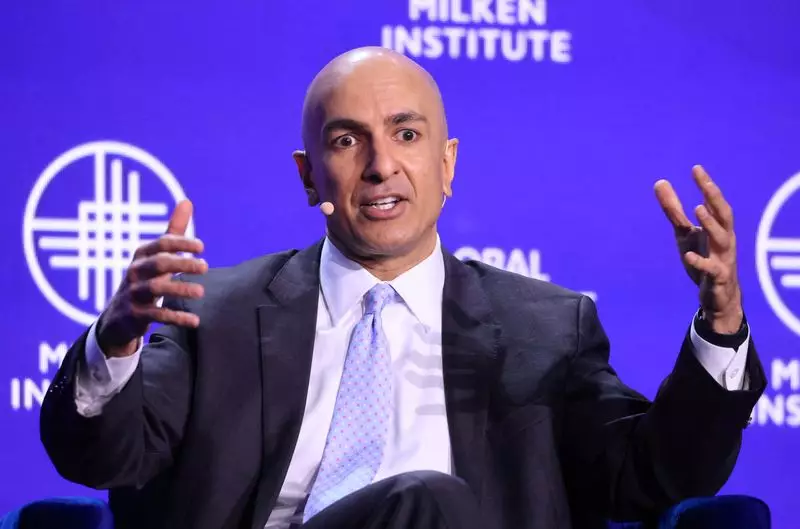In the realm of monetary policy, the Federal Reserve plays a crucial role that can often be influenced by the prevailing political climate. Following the election of President-elect Donald Trump, Minneapolis Federal Reserve President Neel Kashkari expressed an optimistic view regarding the potential for conflict between the Fed and the incoming administration. His comments highlight a rare bipartisanship regarding economic priorities in the United States — both major political parties exhibit a common desire to lower inflation and uphold economic stability.
Kashkari’s assertions, made in an interview, reflect a sense of continuity amidst political change. The backdrop of his remarks was the Fed’s recent decision to lower the benchmark interest rate, a move aimed at stimulating economic activity. While Kashkari did not explicitly support further rate cuts in the near future, his acknowledgment of strong economic indicators suggests a nuanced understanding of monetary policy’s complexities. This interplay between fiscal measures and political leadership frames an essential aspect of the Fed’s operations, particularly in an environment where political agendas may sometimes conflict with economic necessity.
The Resilience of the U.S. Economy
One of the most significant takeaways from Kashkari’s statements is his recognition of the U.S. economy’s resilience. He voiced surprise at the strength and productivity that have characterized recent economic growth. This resilience can complicate the Fed’s strategy as it balances between encouraging growth through lower interest rates and maintaining control over inflation.
Kashkari posited that if this robust economic performance continues, the Fed might need to reconsider its stance on interest rates. His optimism is significant; it does not merely reflect hope but also an acknowledgment of the potential for positive structural shifts within the economy. This perspective challenges the often-cynical narrative that economic policies are solely reactive to political developments. Instead, it suggests that the economy can be strengthened through effective policy and an understanding of macroeconomic trends.
Implications for Future Policy Decisions
Looking ahead, the dynamics between a new political administration and the Federal Reserve will undoubtedly influence future policy decisions. Trump, having previously challenged former Fed Chair Jerome Powell regarding interest rates, sets the stage for a potentially contentious relationship focused on curbing inflation—a critical issue that was central to Trump’s campaign.
However, Kashkari’s confidence in the Fed’s institutional structures that promote sound economic governance suggests that independence in monetary policy might prevail. He highlighted a focus on “getting the job done,” emphasizing the Fed’s primary role in managing inflation rates without succumbing to political pressures. Indeed, the ability of the Fed to maintain this independence while responding to the political landscape will be crucial in navigating the complexities of economic management in the coming years.
As the political landscape shifts, the Federal Reserve, represented by officials like Kashkari, must remain vigilant and adapt its strategies to ensure that economic stability is maintained, even amidst political turbulence. The ongoing collaboration between both sides of the political aisle regarding inflation suggests a shared responsibility in steering the economy toward sustainability and growth, a goal which is imperative as the new administration takes shape.


Leave a Reply